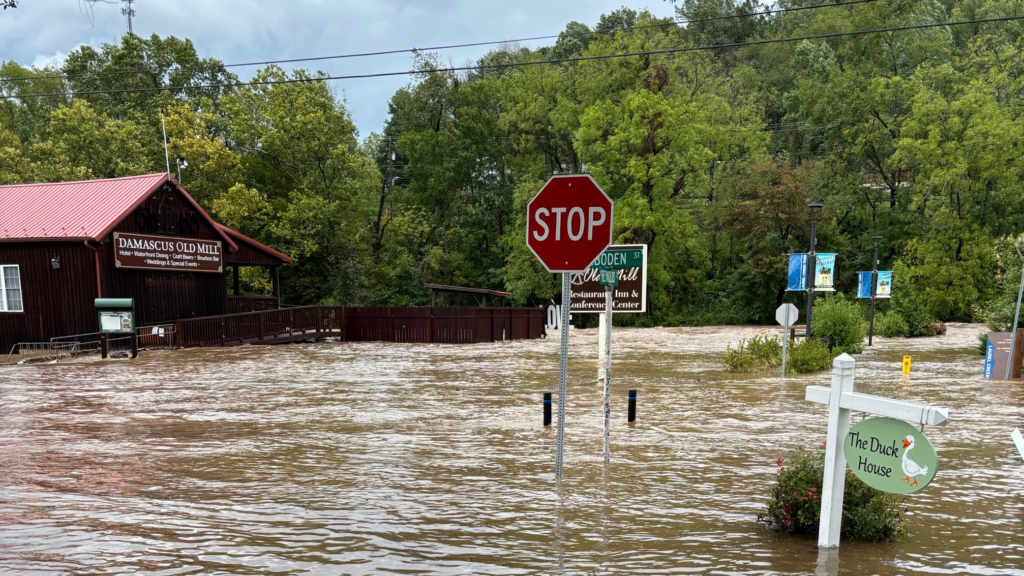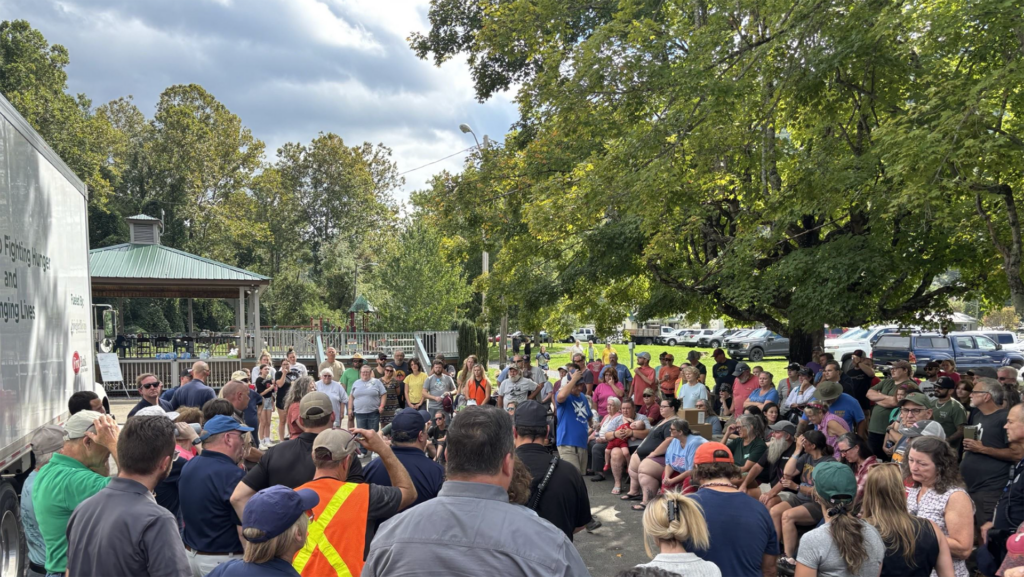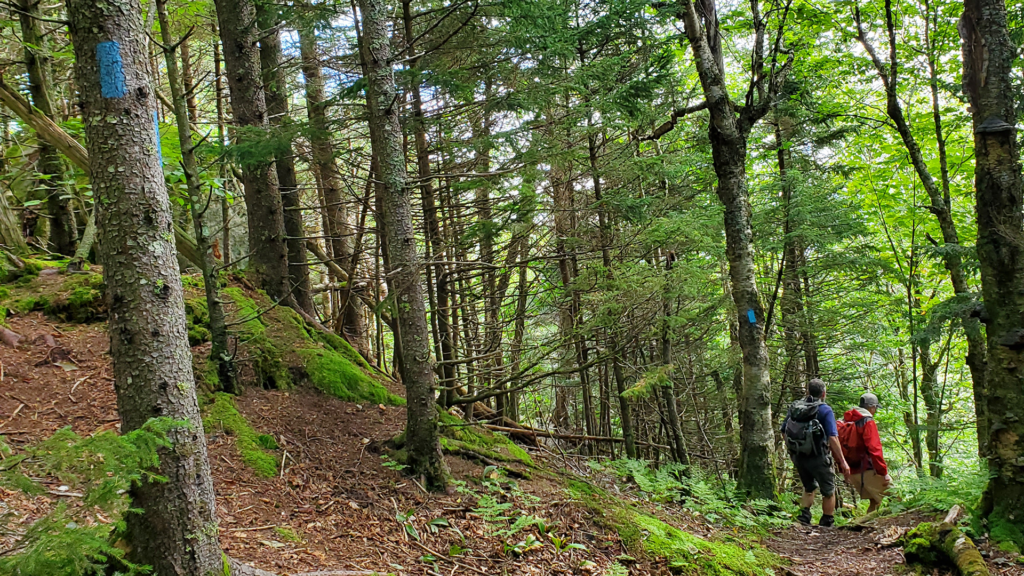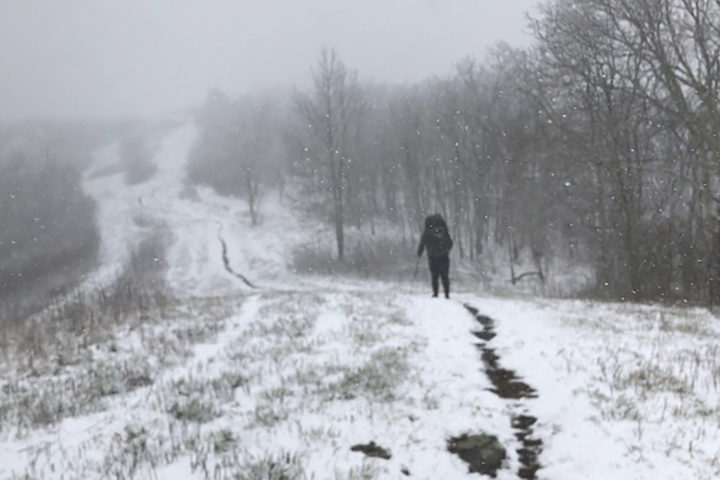3 Ways to Support Hurricane Helene Recovery Efforts
October 3, 2024
In the wake of Hurricane Helene, the southern Appalachian Trail (A.T.) and its surrounding communities are facing an unprecedented recovery effort. While the damage is extensive, there are meaningful ways the A.T. community can step up and make a difference. Whether you’re near or far, here are three simple yet impactful ways to support those affected by the storm.
Give Emergency Services and First Responders Space to Work
Hurricane Helene brought a large-scale humanitarian crisis to the southern Appalachians and the immediate focus must be on the many lives irrevocably changed by this storm. Some Trail towns are limiting access to ensure emergency response teams can reach residents in need. One of the most effective ways the A.T. community can help is by staying off the Trail in impacted sections, even if formal closures are not in place.
The ATC is a private nonprofit and does not have the authority to close sections of the A.T. However, we are urging hikers to avoid the entire A.T. from Springer Mountain to Rockfish Gap (NOBO miles 0.0 to 864.6), regardless of formal closures. This is to avoid additional stress on already maxed-out emergency responders, avoid stress on devastated towns (some of which have curfews and emergency orders in place excluding visitors), and help ensure hiker safety in areas that may be extremely dangerous still to visit. The risk of landslides is still high in much of the region and many river crossings may be swollen and impassable.

Image shows severe flooding in the A.T. Community of Damascus, VA
Support Relief Efforts
While we are eager and anxious to tackle the work necessary to restore sections of the A.T. impacted by Helene, we ask for patience. Once critical infrastructure is fully restored and roads are cleared, the ATC and our partners will begin to evaluate the Trail’s conditions. In the meantime, please consider supporting local relief efforts and emergency response organizations and becoming a volunteer. Here are ways you can help:
Donate to the Appalachian Trail Resiliency Fund
The Appalachian Trail Resiliency Fund was created to reconnect the A.T. and restore the surrounding landscape, support Trailside communities, and ignite robust volunteer recruitment and training.
By donating to the Appalachian Trail Resiliency Fund today, you are helping accelerate recovery and create a more resilient A.T. The path ahead is long, and ATC is committed to delivering on our promise of an open and continuous Trail—no matter how long it takes.
Donate to local relief efforts:
- Appalachian Voices has gathered an extensive list of resources for people in the communities impacted by Helene and those looking to help specific communities and regions: https://appvoices.org/helene-relief/
Donate to humanitarian and emergency response organizations:
- Red Cross: https://www.redcross.org/donate/donation.html
- World Central Kitchen: https://wck.org
- United Way: https://support.unitedway.org/page/Helene
- Appalachia Funders Network: https://www.appalachiafunders.org

Relief efforts are underway in Damascus.
10/22/2024 Update
For those in need of assistance, the following resources are now available in North Carolina.
- Disaster Hotline (toll free): 1 (866) 219-LANC (5262)
- Legal Aid Resources: Tropical Storm Helene Disaster Assistance – Legal Aid of North Carolina
Stay informed about future volunteer opportunities to rebuild and repair the A.T.:
Stay Informed
Staying informed is one of the most important ways you can support the recovery efforts following Hurricane Helene. The ATC, in collaboration with our partners, has created a dedicated landing page to provide the latest updates on Trail conditions, community needs, and emergency resources.
This page serves as a hub for hikers, volunteers, and supporters, featuring official Trail closures, safety advisories, and information on how you can assist in the relief efforts. As the situation evolves, this page will be continuously updated with new resources to ensure you have the most current information. We encourage everyone to regularly check this page for updates and to stay connected with the ATC’s communications to learn more about when and where help is needed most.
In the aftermath of Hurricane Helene, the A.T. community can make a meaningful difference by allowing emergency responders the space they need to work and by staying off impacted sections of the Trail. Your patience and support—whether through donations or future volunteer efforts—will help these communities recover and rebuild. The ATC is committed to providing support to our A.T. Communities and to rehabilitating the Trail and landscape—no matter how long it takes.

Photo by Ilana Goll
Bonus: Other Places to Hike
For folks whose trips to the A.T. have been canceled due to Hurricane Helene, here are some ideas of places to hike instead.
Other Long-Distance Trails
- The A.T. in Shenandoah and Points North
- The Appalachian Trail north of Shenandoah National Park was not impacted by Helene and Shenandoah National Park saw mild impacts compared with those further south (high winds and rains).
- The A.T. from WV – ME is open and generally experiencing normal seasonal weather. Hikers may encounter dry water sources in the mid-Atlantic and southern New England. Hikers will start to encounter snow and ice in the high peaks of NH and ME in the coming weeks. The A.T. up Katahdin closes annualy in mid-October and the ATC recommends hikers summit by October 15th.
- National Recreation Trails
- There is an online database of National Recreation Trails (NRT) and National Water Trails. There are hundreds of options and trails range in length from a few miles to a few hundred miles. Visit the NRT map to find a trail near you!
- Note that some trails listed are in impacted areas. Please stay away from these trails unless they have been opened by the land management agency.
- Other National Scenic Trails
- The A.T. is just one of 11 National Scenic Trails, which include the other two jewels in America’s Triple Crown: the Pacific Crest Trail (PCT) and Continental Divide Trail (CDT). If you are a current A.T. thru-hiker who had to leave the A.T. because of Helene, or are looking for another long-distance hike, one of the other National Scenic Trails may be for you.
- Note that long-distance hikes on other National Scenic Trails, especially the PCT and CDT, have different/shorter weather windows than the A.T., require more advanced backcountry skills than the A.T.(e.g. orienteering and snow travel), and more advanced planning for permits. Properly educate yourself and prepare for the conditions you could encounter.
- The A.T. is just one of 11 National Scenic Trails, which include the other two jewels in America’s Triple Crown: the Pacific Crest Trail (PCT) and Continental Divide Trail (CDT). If you are a current A.T. thru-hiker who had to leave the A.T. because of Helene, or are looking for another long-distance hike, one of the other National Scenic Trails may be for you.
Shorter Hikes
There are hundreds if not thousands of great day hikes in all 14 A.T. states that are not on the A.T. and many that are not in disaster areas.
Visit our page on finding great day hikes to learn more. We have information there both about day hikes on the A.T. and elsewhere! Please be sure to avoid areas impacted by Helene.
Discover More

Plan and Prepare
Trail Updates
Know before you go — be aware of the latest Appalachian Trail conditions, weather advisories, and reroutes/closures.

Official Blog
Climate Resiliency and the A.T.
Protecting and expanding climate-resilient forests along the Appalachian Trail is vital to ensuring their long-term survival.

Stay Informed
Latest News
Read the latest news and updates about the Appalachian Trail and our work to protect it.
